What happens to stocks if AI loses momentum?
Introduction & Market Context
RWE (ETR:RWE) presented its H1 2025 results on August 14, showing lower earnings compared to the previous year but maintaining its full-year guidance. The stock reacted negatively to the announcement, trading down 3.6% to €34.23 following the presentation, reflecting investor concerns despite management’s confident outlook.
The German energy giant reported adjusted EBITDA of €2.1 billion and adjusted net income of €0.8 billion for the first half of 2025, representing significant year-over-year declines but still in line with the company’s expectations given challenging market conditions.
Quarterly Performance Highlights
RWE achieved adjusted earnings per share of €1.1 in H1 2025, representing 50% of its full-year guidance despite headwinds from weak wind conditions in Europe and lower trading results. The company emphasized this performance keeps it on track to meet its 2025 targets.
As shown in the following financial performance summary:
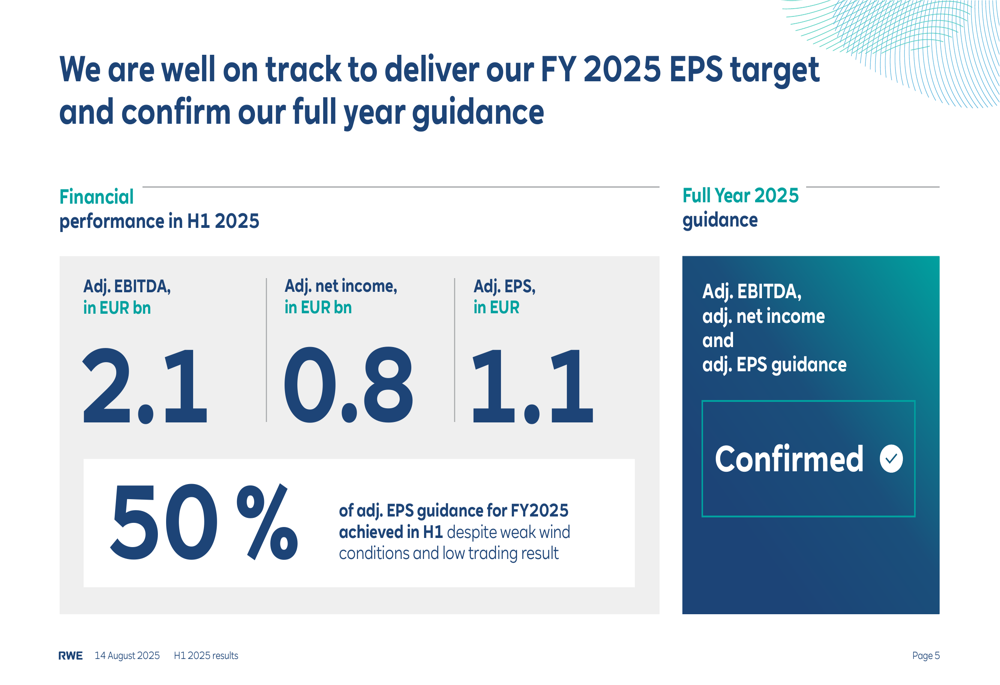
Breaking down the results by segment reveals mixed performance across RWE’s business units. The Offshore Wind division saw the most significant decline, with earnings dropping due to weak wind conditions and lower hedged prices. Meanwhile, the Onshore Wind/Solar segment showed improvement driven by organic growth, partially offsetting European wind challenges.
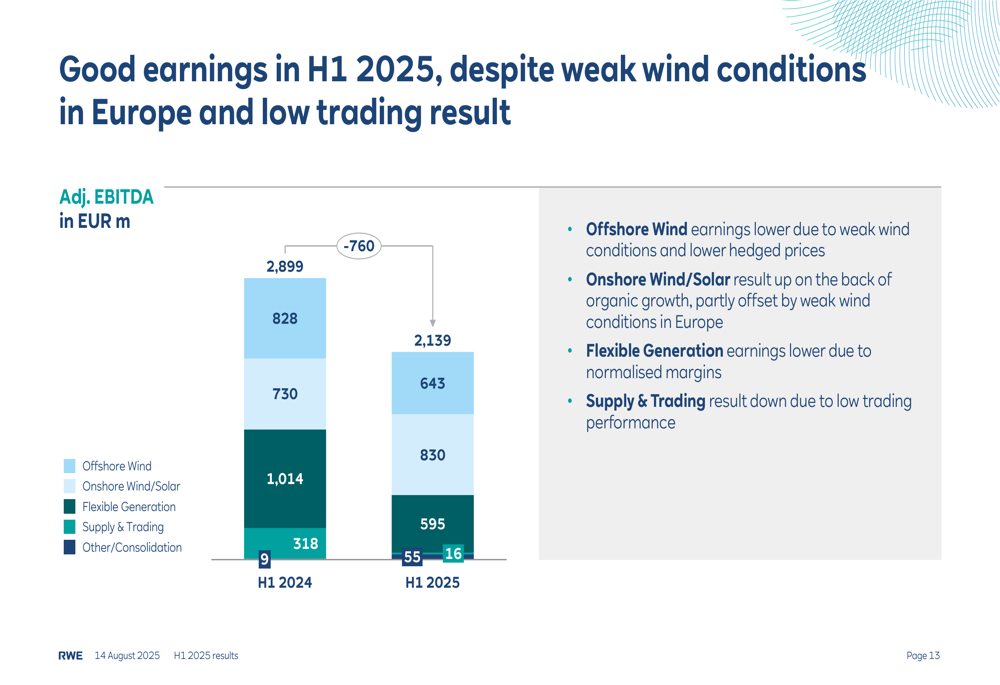
The company’s adjusted net income fell to €775 million in H1 2025 from €1,362 million in H1 2024, with adjusted EPS declining to €1.06 from €1.83 in the comparable period. Despite these decreases, management maintained a positive outlook on the company’s trajectory.
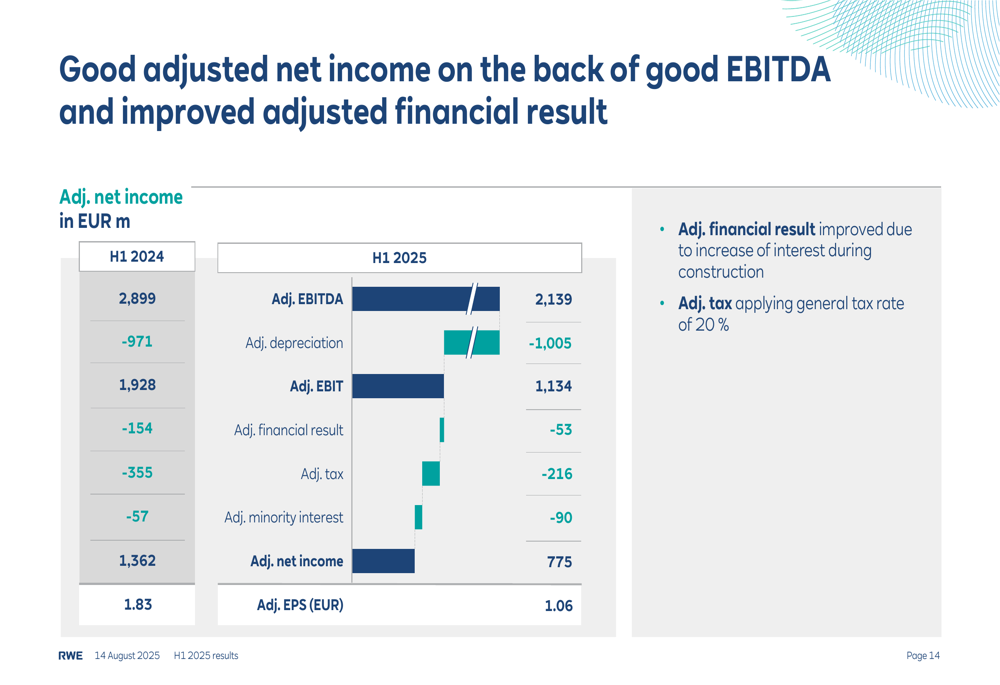
Strategic Initiatives
RWE continues to advance its ambitious construction program, with 11.2 GW of capacity currently under construction and more than 3 GW scheduled to come online in the second half of 2025. The company’s offshore wind projects are progressing according to plan, with significant milestones achieved across multiple developments.
The following slide details the progress of key offshore projects, including Sofia (UK), Thor (Denmark), Nordseecluster (Germany), and OranjeWind (Netherlands):
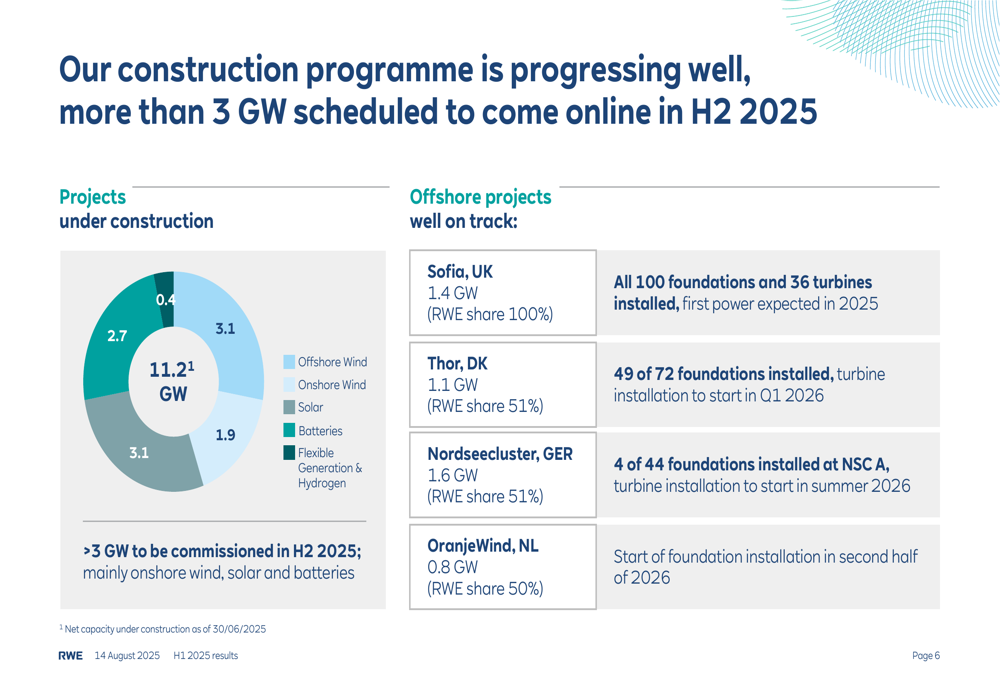
In the UK market, RWE is positioned to capitalize on the government’s commitment to renewables, with the Contract for Difference (CfD) period extended to 20 years and improved pricing terms. The company has nine eligible projects with up to 7.5 GW capacity (RWE share) in the upcoming AR7 auction round.

Similarly, in Germany, RWE is developing a pipeline of gas power plants and battery projects to support the country’s energy transition. The company has 3 GW of gas plants ready to construct and approximately 2.5 GW of battery projects in advanced development.
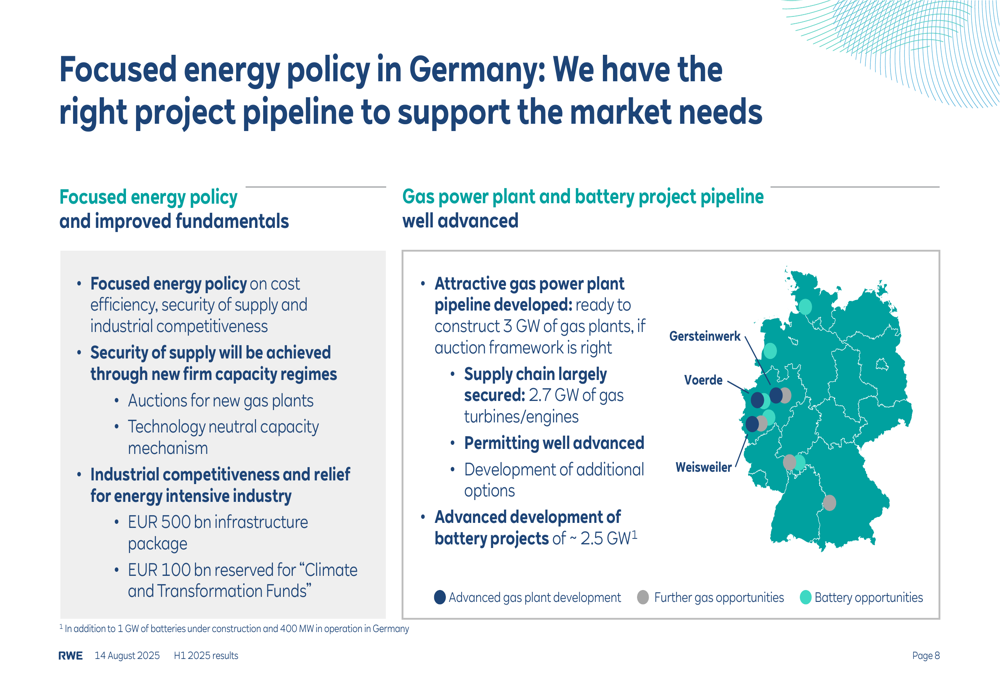
Forward-Looking Statements
Despite the challenges in H1, RWE confirmed its full-year 2025 guidance across all key metrics. The company expects adjusted EBITDA between €4,550-5,150 million, adjusted net income of €1,300-1,800 million, and adjusted EPS of €1.8-2.5 for the full year.
The detailed outlook by division shows expected improvements in the second half of the year:
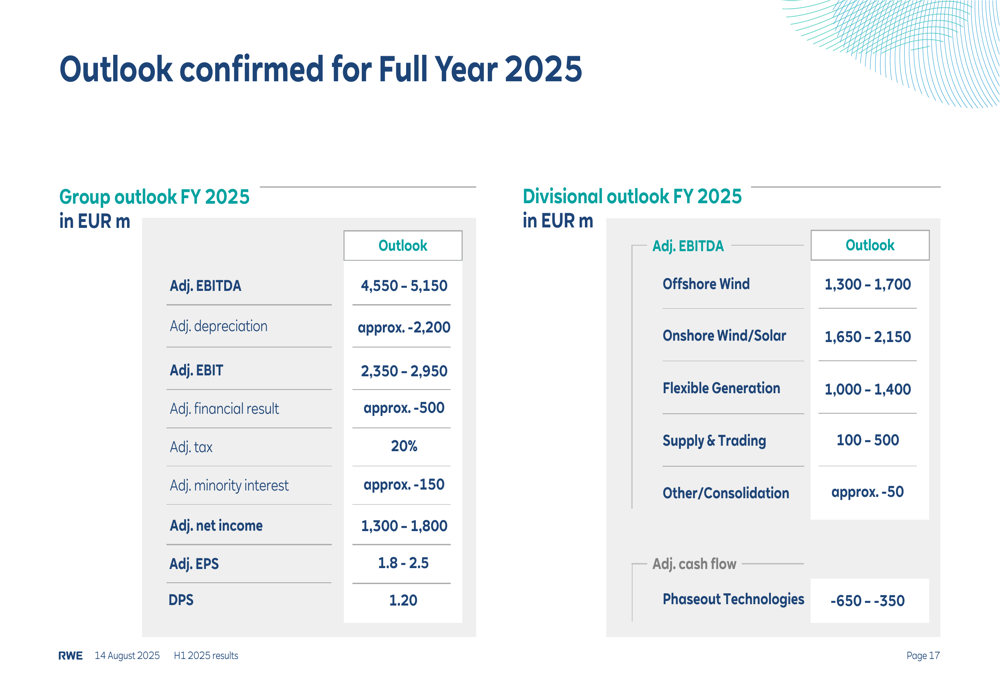
RWE also reaffirmed its commitment to shareholder returns, highlighting its dividend policy of 5-10% annual growth through 2030, with a proposed dividend of €1.20 per share for FY 2025. Additionally, the company’s €1.5 billion share buyback program is progressing as planned, with the first tranche completed and the second tranche ongoing.
The company projects strong adjusted EPS growth with a compound annual growth rate (CAGR) of 18% in 2025, 13% in 2027, and a target of €4 by 2030:
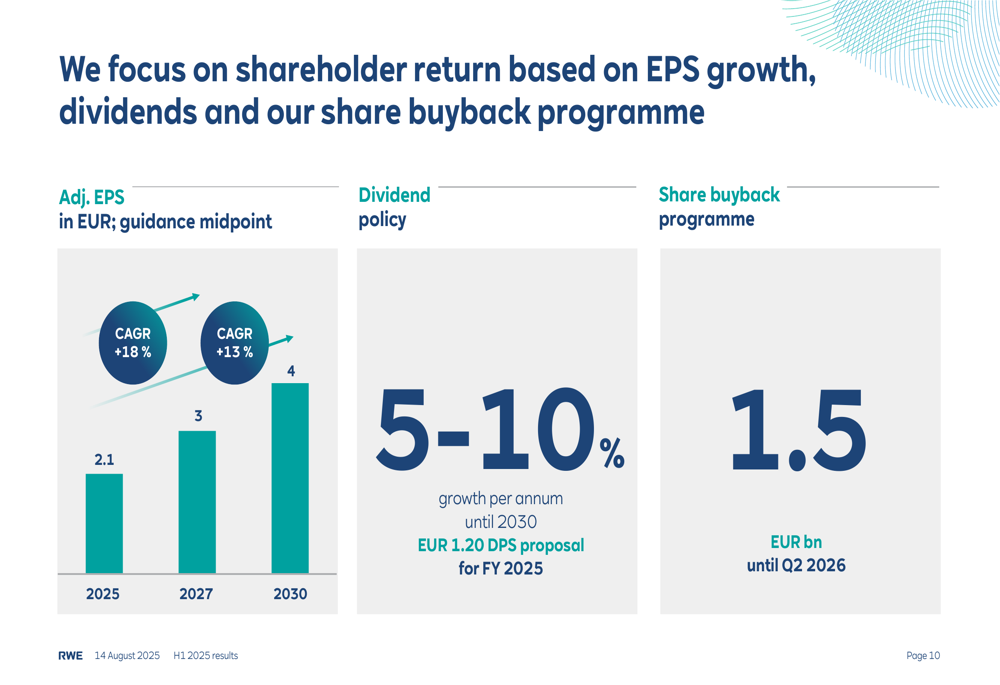
Market Reaction & Analyst Perspectives
Despite management’s positive framing of the results and maintained guidance, investors responded cautiously to RWE’s H1 2025 performance. The stock fell 3.6% on the day of the announcement, continuing a trend seen in pre-market trading where it had dropped 4.11%.
According to the earnings call transcript, analysts raised questions about challenges in offshore wind project development, particularly regarding the long lead times and significant investments required. Management acknowledged these challenges but emphasized the company’s strategic positioning and the improving regulatory frameworks in its core markets.
The stock’s recent performance has been mixed, with RWE trading at €34.23 following the results announcement, well below its 52-week high of €37.72 but significantly above its 52-week low of €27.89. Despite the immediate negative reaction, the company’s relatively low beta of 0.61 suggests less volatility compared to the broader market.
RWE’s financial position remains solid, with strong credit ratings highlighting its business resilience. The company confirmed its BBB+ Fitch rating with a stable outlook and successfully returned to the hybrid bond market with a €1 billion green hybrid bond issued in two tranches.
However, the increase in net debt to €15.5 billion as of June 30, 2025, up from €11.2 billion at the end of 2024, may raise some concerns among investors about the company’s aggressive capital expenditure program in a challenging market environment.
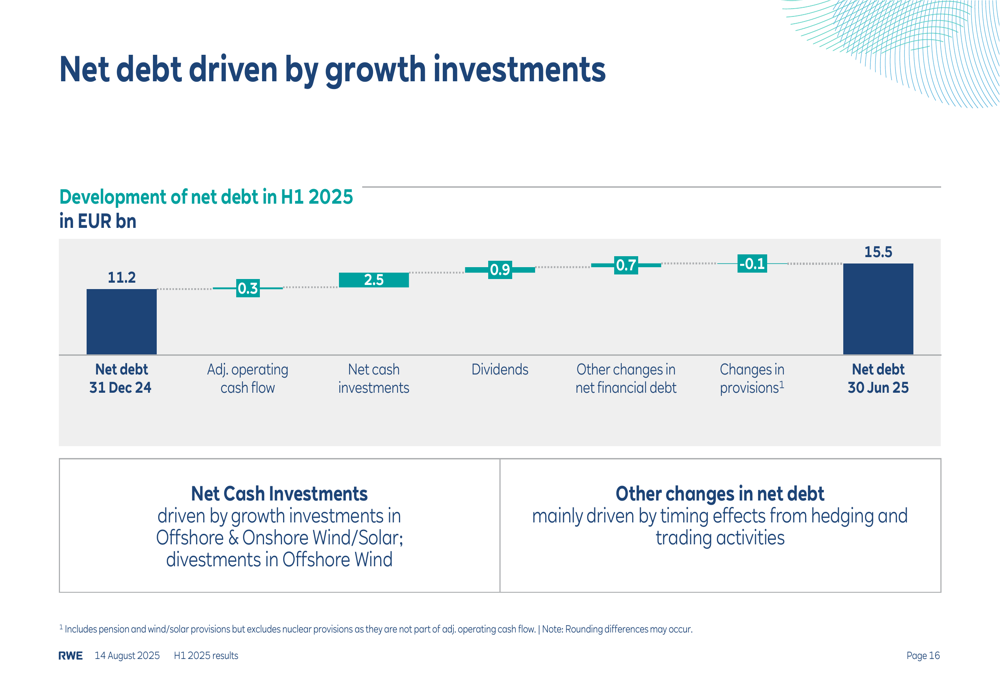
As RWE continues to navigate the complex energy transition landscape, its ability to execute on its ambitious construction program while maintaining financial discipline will be crucial for investor confidence in the coming quarters.
Full presentation:
This article was generated with the support of AI and reviewed by an editor. For more information see our T&C.
